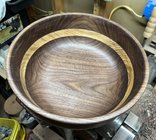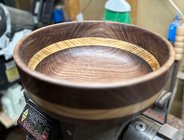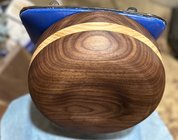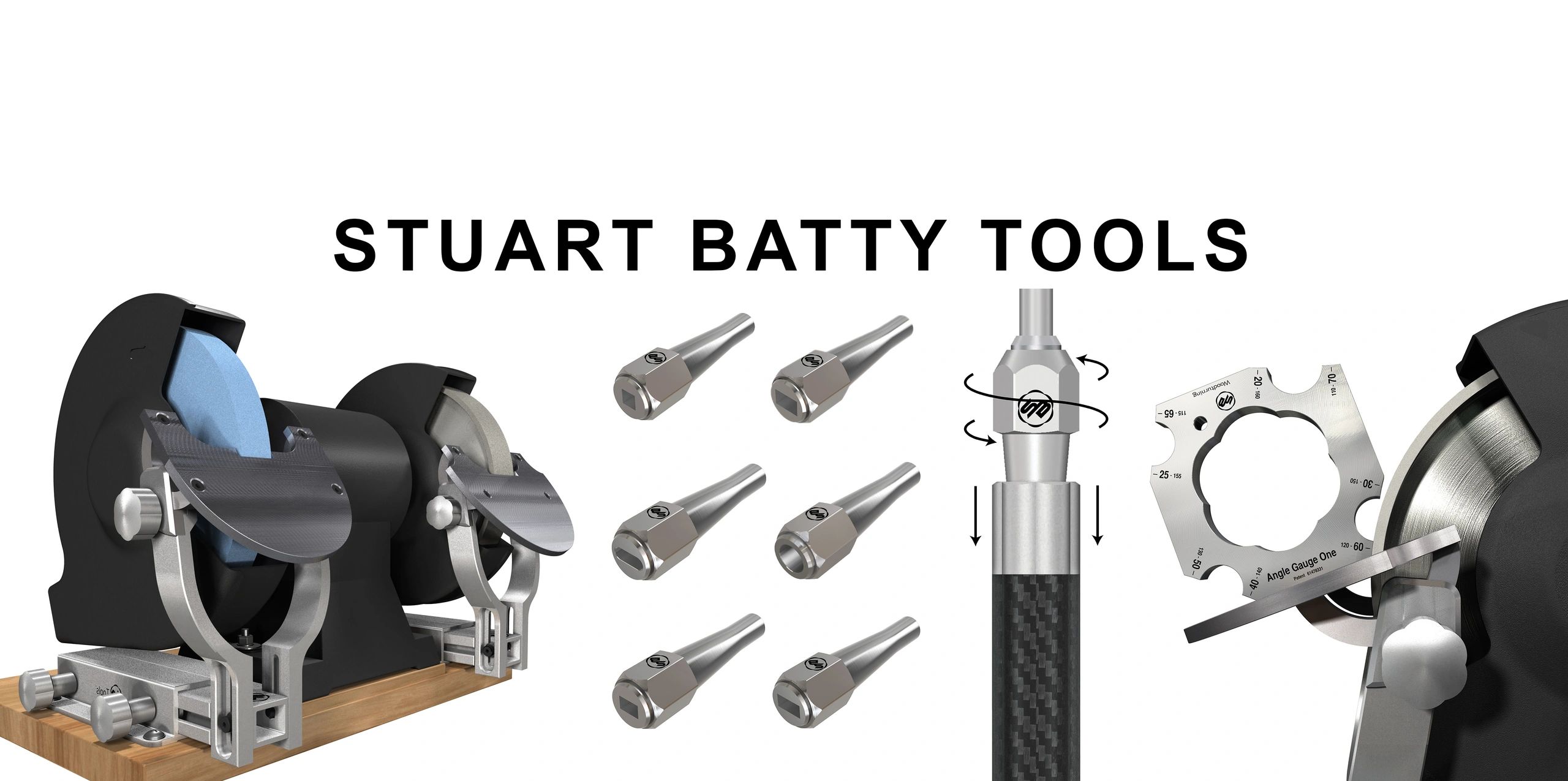I realize I’m a latecomer to negative rake scrapers but this is worth noting for those who haven’t tried one yet.
I have a French curve negative rake inside bowl scraper I got two months ago that, along with a Hunter Hercules #3 cupped carbide, I used extensively on this bowl this week.
To be honest, I was using a Sorby heavy inside bowl scraper, to deepen the inside bottom corners, and got a bad catch. That in turn broke off a section of the mortise, and the bowl partially came out of the Supernova2 chuck jaws but fortunately didn’t fly off. (Yes, I’m still learning, I started turning 14 months ago.)
Enough of the mortise remained that I simply adjusted the jaws and started again. However I couldn’t afford another catch or the stress on the mortise of continuing with the Hunter cupped carbide cutter.
So I finished the inside of the bowl with a negative rake French curve inside bowl scraper I got two months ago, which puts very little stress on the mortise since it only takes off thin ribbons at a time.
I could only take a couple passes at a time, then I would need to resharpen the negative rake on my 8” slow speed grinder to raise another burr. I was only sharpening the bottom bevel, not the top.
It took another two hours of very slow progress to finish the inside of the bowl using this process but it was worth it, to save this bowl; I had no other handy way to hold it on my lathe. Plus the negative rake scraper reduces the need for sanding dramatically, as many have already discovered.
Since part of the side of the mortise was completely broken off, and I had other way to mount a 12” bowl, I had to finish the bottom by hand, with 3” sanding discs on my 55• drill.
But for a bowl that initially broke off part of the mortise and came off the chuck, I’m thrilled I could salvage it and really happy how it turned out.
I couldn’t have completed it without this negative rake scraper.
I could easily have converted an extra skew into one of these on my grinder but I decided to splurge: I wanted to try one of these “fancy” Cryo treated chisels.
12” wide, 4 1/2” thick ash and walnut salad bowl. A friend requested this as a Christmas gift for his wife.




I have a French curve negative rake inside bowl scraper I got two months ago that, along with a Hunter Hercules #3 cupped carbide, I used extensively on this bowl this week.
To be honest, I was using a Sorby heavy inside bowl scraper, to deepen the inside bottom corners, and got a bad catch. That in turn broke off a section of the mortise, and the bowl partially came out of the Supernova2 chuck jaws but fortunately didn’t fly off. (Yes, I’m still learning, I started turning 14 months ago.)
Enough of the mortise remained that I simply adjusted the jaws and started again. However I couldn’t afford another catch or the stress on the mortise of continuing with the Hunter cupped carbide cutter.
So I finished the inside of the bowl with a negative rake French curve inside bowl scraper I got two months ago, which puts very little stress on the mortise since it only takes off thin ribbons at a time.
I could only take a couple passes at a time, then I would need to resharpen the negative rake on my 8” slow speed grinder to raise another burr. I was only sharpening the bottom bevel, not the top.
It took another two hours of very slow progress to finish the inside of the bowl using this process but it was worth it, to save this bowl; I had no other handy way to hold it on my lathe. Plus the negative rake scraper reduces the need for sanding dramatically, as many have already discovered.
Since part of the side of the mortise was completely broken off, and I had other way to mount a 12” bowl, I had to finish the bottom by hand, with 3” sanding discs on my 55• drill.
But for a bowl that initially broke off part of the mortise and came off the chuck, I’m thrilled I could salvage it and really happy how it turned out.
I couldn’t have completed it without this negative rake scraper.
I could easily have converted an extra skew into one of these on my grinder but I decided to splurge: I wanted to try one of these “fancy” Cryo treated chisels.
12” wide, 4 1/2” thick ash and walnut salad bowl. A friend requested this as a Christmas gift for his wife.




Last edited:

